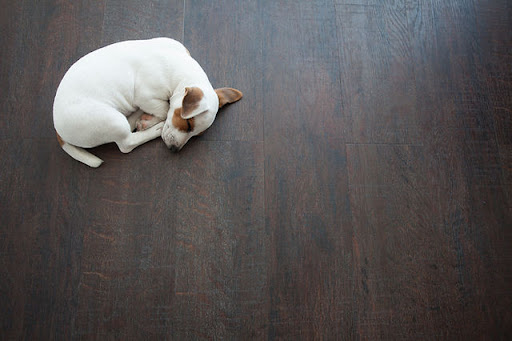How to Install Hardwood Floors on Concrete
by siteadmin

Whether you're installing a solid hardwood floor or an engineered wood floor over a concrete slab, there are certain precautions that need to be taken. Otherwise, it could lead to serious problems and a wasted investment.
For one, the concrete needs to be completely cured and moisture free before installing. This is because concrete breathes and takes in and expeles moisture, which can affect the wood.
Subfloor
Hardwood flooring is a popular choice for many home owners these days. It offers style, warmth and value to your home, boosting its resale value and increasing the appeal of your space.
Whether you choose traditional wood or engineered hardwood, you need to make sure the subfloor is properly installed before installing your new floors. If you don’t, you could end up with uneven surfaces and expensive repairs later on.
A subfloor can be made from a variety of materials, including concrete. It’s not recommended to install solid or engineered flooring over freshly poured concrete.
Another popular subfloor material is OSB (oriented strand board). It’s a cross-oriented layer of rectangular wood strands that are glued together with waterproof adhesives.
Before you install hardwood flooring over a concrete slab, be sure the subfloor is dry and level. If the concrete is too wet, moisture will seep into your flooring and ruin it.
Vapor Barrier
Concrete is a popular flooring material, but it can be susceptible to moisture buildup. A vapor barrier is an important tool to prevent this from happening and to keep your floors looking great.
Vapor barriers are also known as vapor retarders, and they work to stop moisture from coming up through concrete. They also help to reduce the chances of mold, which can lead to health issues.
If you’re considering installing hardwood floor on concrete, it’s a good idea to install a vapor barrier first. This will prevent moisture from getting into the concrete and destroying the floor.
A vapor barrier is made up of sheets that are taped together to seal the seams. They should be overlapping by at least six inches, and some have self-adhesive ends for easier application.
Moisture Test
Before you begin installing hardwood floors on concrete, it is essential to test the moisture level of the slab. This will determine if it is dry enough to support the subfloor.
The most common method of testing for concrete is to use a DIY moisture meter, which you can find at most hardware stores. It uses a chemical called anhydrous calcium chloride to measure the moisture levels in the slab.
It is important to test for moisture levels at both the surface and below the surface. If the test only measures at the surface, it can be skewed by environmental factors and other conditions.
A more reliable method is to place a probe in the slab and leave it for three days. By measuring relative humidity levels within the slab, this can give you a complete picture of the concrete moisture condition.
Adhesive
Adhesive, also called glue, cement, mucilage, or paste, is any non-metallic substance applied to one or both surfaces of two separate materials that binds them together and resists their separation. It can be used in a variety of residential, commercial, and industrial applications.
There are many types of adhesives, each with a range of chemical compositions, forms, classifications, load bearing capabilities, and other characteristics. Choosing the right adhesive for your application depends on the substrate material, the environment, and installation conditions.
The most common type of adhesive is a spray or roll coating, but there are also liquid and solid polymer solutions. Both can be cured with air, radiation, or heat, and both have a wide range of chemical properties. They can be applied through a variety of tools, such as brushes, rollers, films, or pellets. Lastly, there are pressure-sensitive adhesives (PSAs) that can be manufactured in either a liquid or 100% solid form. They are usually made from acrylate-based polymers and can be heated to initiate a cross-linking reaction.
City and Suburban Floor Sanding
https://www.cityandsuburbanfloorsanding.com/
Hardwood Floor Refinishing Naperville
Whether you're installing a solid hardwood floor or an engineered wood floor over a concrete slab, there are certain precautions that need to be taken. Otherwise, it could lead to serious problems and a wasted investment. For one, the concrete needs to be completely cured and moisture free before installing. This is because concrete breathes…
Recent Posts
- Carpenters’ Corner: Exploring Essential Woodworking Tools and Their Uses
- Pergolas: Enhancing Outdoor Spaces and Reducing Stress
- Choosing the Right Installation Method for Flooring: A Comprehensive Guide
- Understanding Color Psychology in Flooring: Transform Your Space with the Right Hues
- Elevate Your Space: Custom Closets Embracing Design Trends and Inspirations
